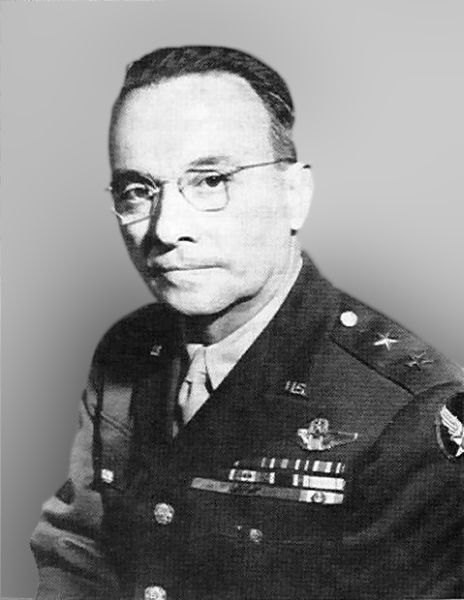Brereton, Lewis Hyde
- Date of birth:
- June 21st, 1890 (Pittsburgh/Pennsylvania, United States)
- Date of death:
- August 1st, 1967 (Washington/District of Columbia, United States)
- Buried on:
- Arlington National Cemetery
Plot: 6. Grave: 5717-G. - Service number:
- 0-3132
- Nationality:
- American
Biography
General Lewis H. Brereton (born June 21, 1890; Died July 20, 1967) graduated from the U.S.Naval Academy in 1911 and was one of the first graduates of the Signal Corps Aviation School (1913). In WWI, he commanded the 12th Aero Squadron, one of the first American flying units
on the front; at the beginning of World War II he was commander of the Far East Air Force in the Philippines; then Deputy Air Commander-in-Chief, Allied Air Forces, in Java (January-June 1942); Commander, Middle East Air Forces (9th Air Force, June 1942-October 1943); Commanding General of the Ninth Air Force in the European Theater (October 1943-August 1944); and Commander of the First Allied Airborne Army (August 1944-May 1945).
After the War until his retirement in 1948 he was Chairman of the Military Liaison Committee to the Atomic Energy Commission in Washington, D.C.
Do you have more information about this person? Inform us!
- Period:
- Second World War (1939-1945)
- Rank:
- Major
- Unit:
- Corps Observation Wing, U.S. Army Air Service
- Awarded on:
- 1919
War Department, General Orders No. 15
- Period:
- Second World War (1939-1945)
- Rank:
- Major General
- Unit:
- ABDAIR, American-British-Dutch-Australian Command (ABDACOM), Allied Forces
- Awarded on:
- June 1942
- Period:
- Second World War (1939-1945)
- Rank:
- Major General
- Unit:
- ABDAIR, American-British-Dutch-Australian Command (ABDACOM), Allied Forces
- Awarded on:
- December 1942
- Period:
- Second World War (1939-1945)
- Unit:
- Tenth Air Force, U.S. Army Air Forces
- Awarded on:
- 1942
Headquarters, 10th Air Force, General Orders No. 4
- Period:
- Second World War (1939-1945)
- Rank:
- Major General
- Unit:
- Commanding-in-Chief, Far East Air Force (FEAF), U.S. Army Air Forces
- Awarded on:
- February 18th, 1943
War Department, General Orders No. 7
- Period:
- Second World War (1939-1945)
- Rank:
- Lieutenant General
- Unit:
- First Allied Airborne Army, Supreme Headquarters Allied Expeditionary Force (SHAEF), Allied Forces
- Awarded on:
- November 23rd, 1944
War Department, General Orders No. 88
- Period:
- Second World War (1939-1945)
- Rank:
- Lieutenant General
- Unit:
- First Allied Airborne Army, Supreme Headquarters Allied Expeditionary Force (SHAEF), Allied Forces
- Awarded on:
- 1944
Headquarters, U.S. Strategic Forces in Europe, General Orders No. 87
- Period:
- Second World War (1939-1945)
- Rank:
- Lieutenant General
- Unit:
- First Allied Airborne Army, Supreme Headquarters Allied Expeditionary Force (SHAEF), Allied Forces
- Awarded on:
- January 1945
Awarded with Palm.
- Period:
- Second World War (1939-1945)
- Rank:
- Lieutenant General
- Unit:
- First Allied Airborne Army, Supreme Headquarters Allied Expeditionary Force (SHAEF), Allied Forces
- Awarded on:
- August 23rd, 1946
[This award supersedes the award of a Bronze Oak Leaf Cluster to the Distinguished Flying Cross to Lieutenant General Brereton, as published in General Orders 87, United States Strategic Air Forces in Europe, 2 November 1944.] War Department, General Orders No. 95 (bronze oak leaf cluster)
- Period:
- Second World War (1939-1945)
- Period:
- Second World War (1939-1945)
- Period:
- Second World War (1939-1945)
- Period:
- Second World War (1939-1945)
- Period:
- Second World War (1939-1945)
Sources
- Photo 1: US Government Puplic Domain
- - The Dutch Medals Page
- Arlington Cemetery Page
- Lewis Brereton - Recipient -














